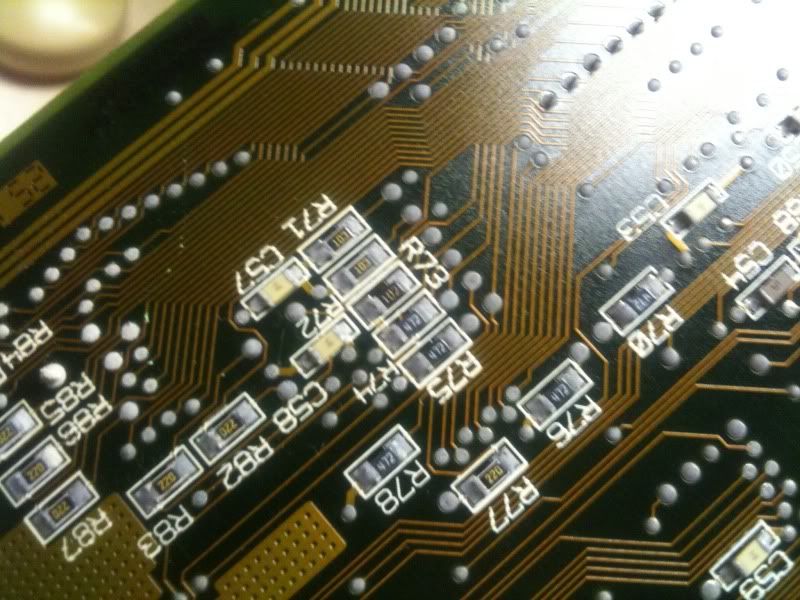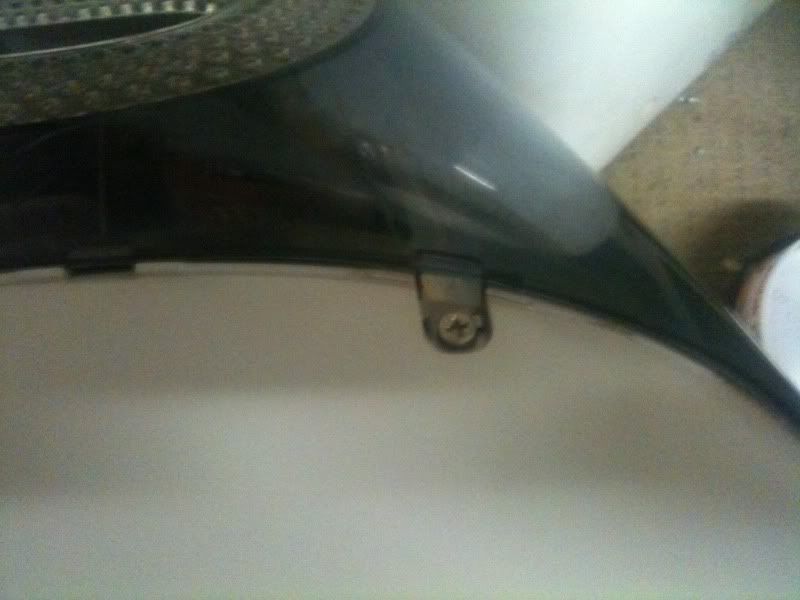Some time ago, it was observed by a fellow vintage Mac collector from 68kmla, that almost all of these explosions were occurring with a particular brand of battery used in countless Apple's and Mac's from the IIgs and SE (the first Mac's to make use of a logic-board mounted cell), right up until at least 1999 (I found one inside a Rev.1 B+W G3 tower that has a '99 date code corresponding with when the tower was made). The brand in question was Maxell, a Japanese company whom also made floppy discs, VHS tapes, and other such electronic consumable items during the 90's. The other popular OEM battery was Tadiran from Israel, which does not seem prone to violently exploding, although in the worst cases they have been known to occasionally degrade and disfigure when they become old and discharged, causing them to leak and cause similar damage, albeit far less devestating in appearance. Other batteries I have since found as OEM items are a German manufactured cell which is blue in color and branded as something translating to "Sunlight" or similar, and also in a couple of machines from the 80's (specifically an SE and an SE Superdrive), a black Varta item also from Germany. From my experiences at least, these appear to also be relatively untroublesome, even after 20 years or more. There is one other brand, Tekcell, which seem more common as a replacement item than an OEM part, and thus far I haven't got any intel on these cells. I guess no news is good news?
Anyway,after I'd read this thread over the weekend I hastily set about digging into my collection to inspect machines or pulled boards for damage and remove all the batteries from them regardless of age or brand. I have gotten through 18 units so far... 2 SE's, 2 CC's, 3 IIgs's, a IIci, a IIsi, 4 LC's, 2 early and 1 late LCIII, a Performa 400 (LCII), and an LC475... plus a few pulled boards (Classic, 475, PM5200, PM7xxx), and there are many more to go. Outlined below are the results of my sweep to date. The news is good but not great, as you will see below. I have included a number of phot's to illustrate various kinds of damage and also the various types of battery for ID purposes.
First cab off the rank was my dad's SE FDHD that had been in the shed and switched on occasionally for the past 7 years. In this machine I thankfully found an intact Tadiran battery with '88 date code which I promptly removed. After this slight confidence boost, it was time to go through my own machines.
Before I had even started sifting through the stack, I found 3 Classic logic boards... the first had clearly had a battery explode already, which I could no longer find any viable trace of to discern a brand... only the aftermath below. At a glance however, I'd be inclined to write this off as a Maxell victim, as they were very common in Classics. I'd call this a parts board now at best... at worst, maybe junk.
The second one had not been demolished so impressively but nonetheless had a badly degraded Maxell that had leaked and started to corrode the caps, a couple of diodes, an I/C and a rectifier in the immediate vicinity. The finger contacts are also damaged as well as some corrosion on the bottom of the board, but i believe this may be due to it's proximity to the exploded battery, which was on the board beneath it in a stack.
The third one was on top of the stack, with a RAM stacker and 2 SIMMS connected to it, and with another spare stacker resting on top of it, These were all luckily unharmed. Incidentally, this third board had the blue-coloured German battery, which appeared fine and seemed to be original fitment. I have found a few of these in the machines I've investigated so far, however I am led to believe they are most common in Australian machines (many of which are built in the Singapore factory), and not terribly common in the US...
The next victim was this LC475 board I pulled from a machine years ago. This one however was not recently exploded... This corrosion was present when I got the machine nearly 10 years ago hence it's non-functional state. Thus far most of the LC475's Ive had from memory have had Maxell batteries.
After that, was time to get into the complete computers... First in line were my trio of IIgs's. The first two were fine, with no signs of leakage. I believe one had a Tadiran and one a blue battery. AFter removing these, I opened the Limited Edition (which has the PRAM battery soldered to the board on legs underneat the PSU), and found a Tadiran soldered on pigtails (common on very early SE's with 800k drives and early gs's), which was obviously original and in a very sad state. the casing was deformed, it had clearly been leaking and there was corrosion beginning on one of the pigtails. After I snipped it off, I found the lower surface of the battery casing to be very poorly. I'll be pulling this board out over the coming days and washing it just to be safe and make sure no trace of goop remains...
The Color Classics both checked out fine, as did the IIci, the one of my pair of IIsi's that I checked, the LC's, the LCIII's, and the Performa 400... No real signs of serious degradation in the assortment of blue german batteries and Tadirans I encountered aside from very minor specks of corrosion beginning on the endcaps of a few of the 80's and early 90's coded ones. There was one Maxell in the lot that seemed good at a glance aside from similar endcap corrosion... but it was nonetheless binned.
Then I got to the the last of the "pizzabox" Mac's, The only operational LC475 in my collection... It was then thaat I was saddened and kind of awestruck when I found my first real irrecoverable Maxell victim. Sometime in the 4 years since the 475 was stored in a fully operational state on a shelf, this Maxell inside it had spontaneoulsy blown and blown good....
I guess I don't have a functioning LC475 any longer.
 It looks like there must have been a decent amount of heat going on in there when it happened, and it looks to have been a pretty violent reaction indeed... the stuff reached all the way to the very rear of the case, and even seems to have eaten away at the actual locking tab as it snapped like a cracker-biscuit when i began to open the case. It has rusted one localised corner of the PSU case and destroyed everything in it's path on the logic board... even the fan copped some!
It looks like there must have been a decent amount of heat going on in there when it happened, and it looks to have been a pretty violent reaction indeed... the stuff reached all the way to the very rear of the case, and even seems to have eaten away at the actual locking tab as it snapped like a cracker-biscuit when i began to open the case. It has rusted one localised corner of the PSU case and destroyed everything in it's path on the logic board... even the fan copped some! I've now written this one off as junk and stripped it... luckily there was nothing in the PDS and the RAM and VRAM modules on the board seem to have miraculously escaped unharmed. The HDD was luckily shielded pretty well by it's own SCSI cable (which is ruined) and the FDD was far enough out of the way to escape without injury. I'm going to pull the PSU apart before I use it to make sure no stuff has not gotten in and began eating away the internals. This means I'm now on the prowl for a new LC475. I don't even have a spare case anymore, as I threw most of the cases from the ones I stripped out to make room for working stuff and kept only the best one, which is now junk. Ah well... lesson learned.
Anyway, after that devestaing blow I investigated one of the prides of my collection expecting the worst. Luckily however, upon opening my nearly mint SE Superdrive I was pleasantly surprised to find an unharmed logic board and analogue board (Incidentally with caps that look as good as brand new) and a Varta battery on pigtails with a date code on it that would indicate it is the original 25 year old item.
It looks like new too, and from memory this machine actually still kept reasonable time after 25 years when it was last switched on, however to be safe I cut it off and left the pigtails on the board in case i ever decide to solder on a battery carrier.
Anyway... after the devestation I found in my 475 I'll be continuing my investigations post-hast, as I suspect at the very least my working Classics all have Maxell batteries onboard still, as well as the SE/30 and there is a good chance I may find some in the LC 5xx and early Powermacs, and the IIvx and other IIsi that I havent checked yet.
These machines were all sold in Australia, and as such, many came from the Singapore factory... Incidentally, most of the machines of Singapore origin do NOT appear to have the Maxell battery onboard, and the ones that do have it have all seemingly been manufactured in the USA?
In any case I shall continue my checks and post an update when I have news, or with luck don't have news!
OMT






























